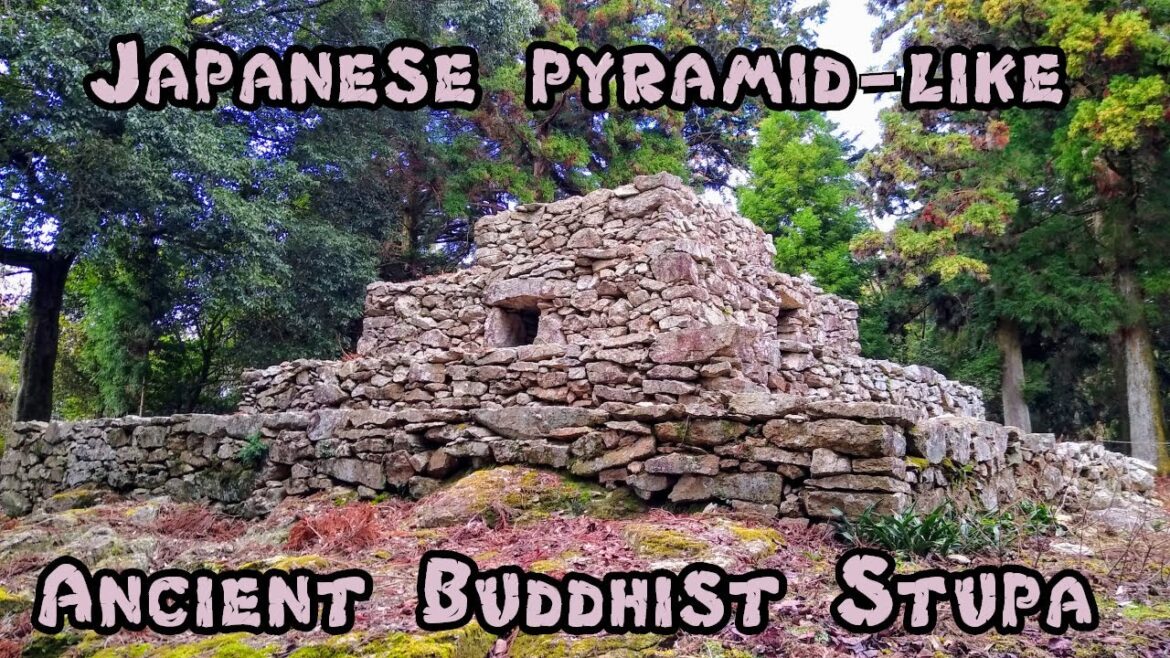#pyramid #stupa #japanhistory
A lesser known aspect of Japan’s ancient history is that the country has a few pyramid-like structures, most which date back to the Nara period (710-794AD). These structures, which functioned as Buddhist Stupas, resemble the Mesoamerican pyramids, and also resemble some in Central Asia. There are actually “3 Great Pyramids” in Japan, and this video shows an awesome example of one of these, called Kumayama Iseki (熊山遺跡), which basically means “Kumayama Ruins” – it’s thought to date from around 753AD. I’ve visited the other two pyramids and they will be appearing on this channel later also.
This stupa sits up on the peak of the 508 metre Mount Kuma (熊山) in Okayama Prefecture (岡山県). Its base averages 11.7 metres on each side, then it has 3 tiers with a per side average of 7.8m, 5.4m and 3.4m respectively as we go upwards. Its height is around 3.5 metres. The holes/niches on the four sides are thought to be shrines where Buddha statues and other objects were once placed.
As we’re not supposed to climb this pyramid I’m not sure if it’s visible these days or sealed off, but there is also apparently a 2 metre deep square pit in the centre of the structure’s body starting at its top. Within it was found a 162cm high five-tiered ceramic cylinder, and it’s said that the cylinder contained a small sansai pot with a leather scroll with writing on it, but this was stolen from the pyramid in 1937 and hasn’t been found since. The cylindrical container is stored at Tenri University in Nara Prefecture.
There are apparently remains of around THIRTY of these structures elsewhere on this mountain, but the others have little more remaining than their foundations or have become stone piles (would love to find them though!).
As a bonus, at the end of the video I’ve included a little bit of my drive down the mountain from the site. It gives you an idea of what the drive is like – a narrow one lane (but two way) 6km mountain road, with barely a space to get around oncoming cars. Lucky for me there was not a single car to be seen on the way up or down but I was there on a weekday so it was a really cool experience. I can’t imagine this place would ever be busy as it’s not that well known, but I think it would be a challenging drive on a weekend with other cars coming from the opposite direction. This is typical of some roads in the boondocks of Japan, so bring your driving skills and patience if planning to visit places like this 😉
Location : https://goo.gl/maps/35hiFgeyuuptcMKt8
More info (Japanese) : https://www.city.akaiwa.lg.jp/bunkazai/ichiran/cyuumoku/2277.html
http://tripmode.g2.xrea.com/msrj/msrj04.htm
Music :
Neffex – “‘WITH YOU” (INSTRUMENTAL VERSION)
Ryan Oakes – “Dead Astronaut”
▬ Contents of this video ▬▬▬▬▬▬▬▬▬▬
0:00 – Pyramid
2:26 – Mountain Drive
3:34 – Finish
*********************************************
Q: What am I watching here ?
A: You are watching footage of a “kofun/古墳” – kofun are tombs in Japan that were created during the Kofun Period (roughly between the 3rd and 7th Century AD) – this era was preceded by the Jomon and Yayoi periods, and followed by Asuka, Nara and so on. These tombs were built as burial chambers for people from Japanese imperial families and other people of higher status in society during those days. The most well-known and generally largest tombs are found around Kyoto and Osaka, but they are found all over Kansai, Kanto, Tohoku etc., and even in other parts of Japan such as Shikoku and Kyushu. Figures vary greatly, but some sources state there are over 160000 of these kofun in Japan. At times you will see haniwa on and around kofun – haniwa are terracotta figures which were made in various shapes, including being formed as people and animals.
Have a read of the the Wikipedia article for more information : https://en.wikipedia.org/wiki/Kofun
Ideally I’d like to build a kofun appreciation community of sorts, but that is just a dream right now. You can hit me up on:
https://www.facebook.com/japankofun/
https://www.instagram.com/japankofun/

